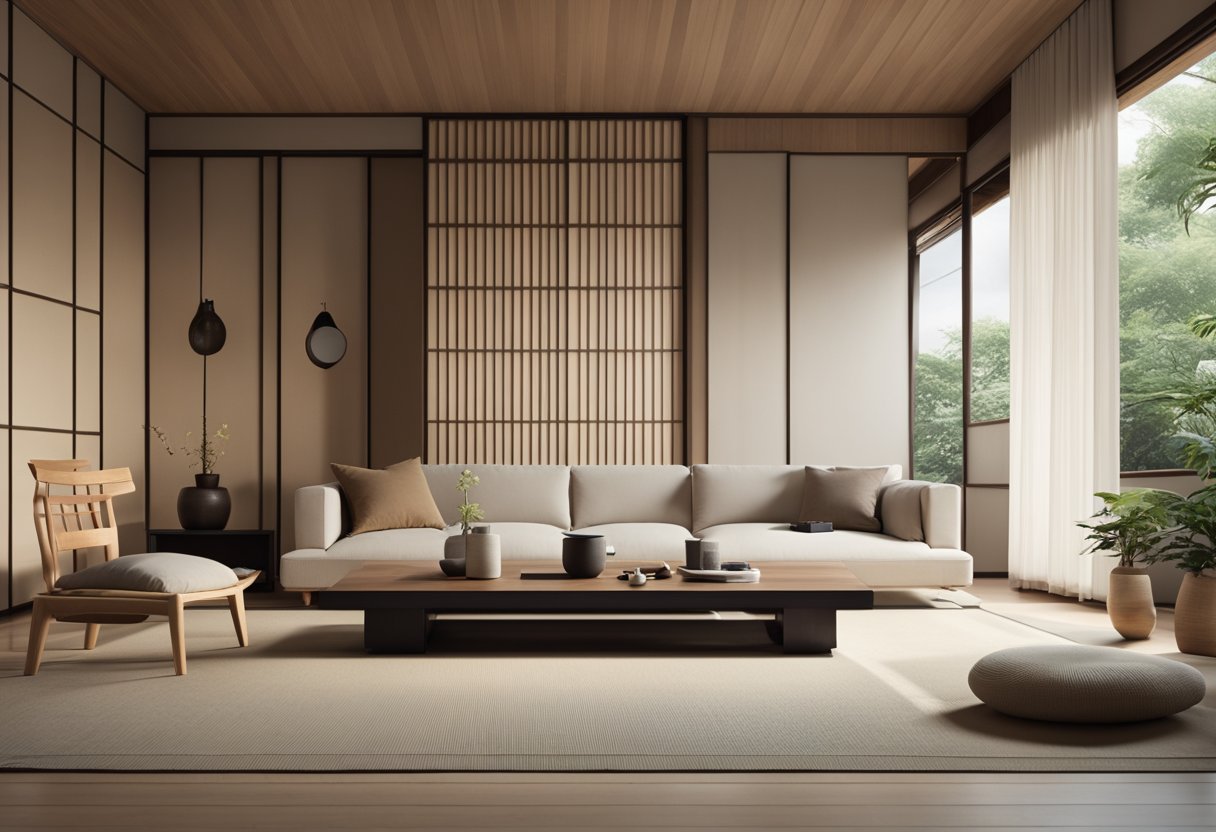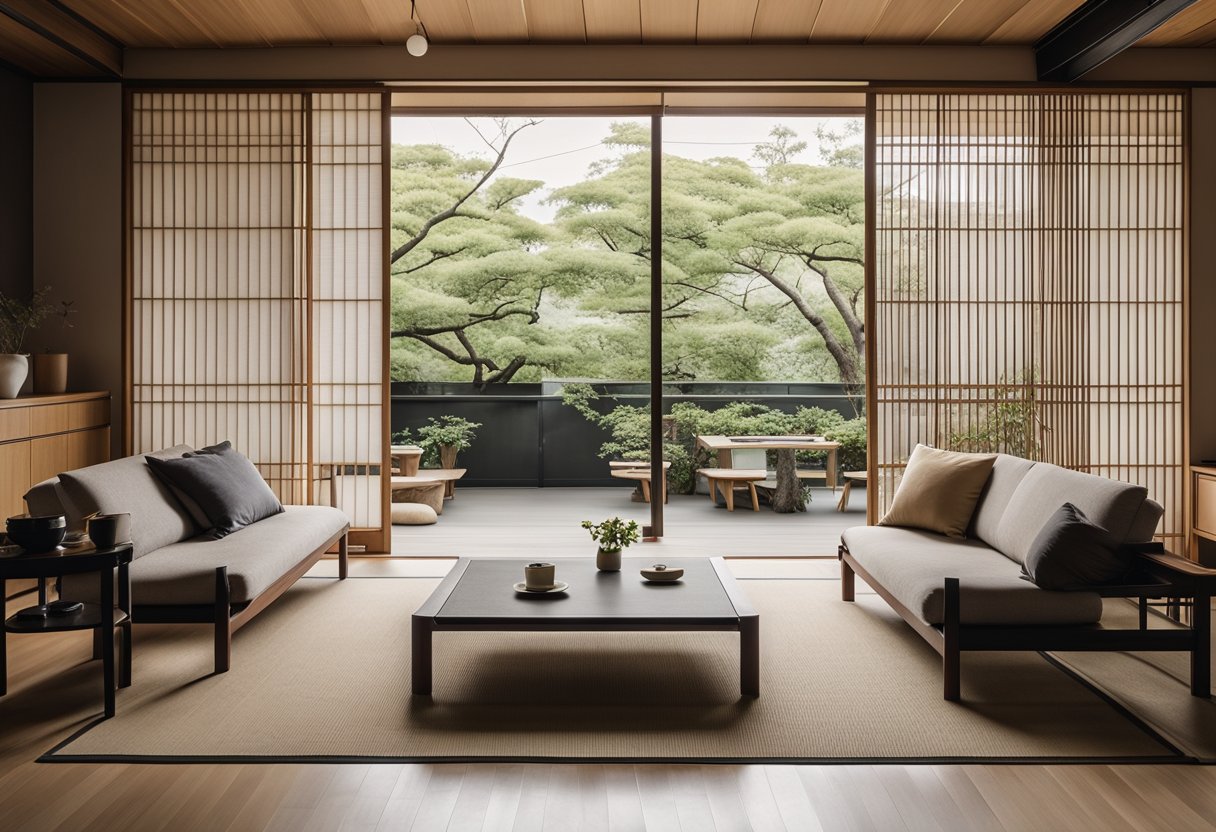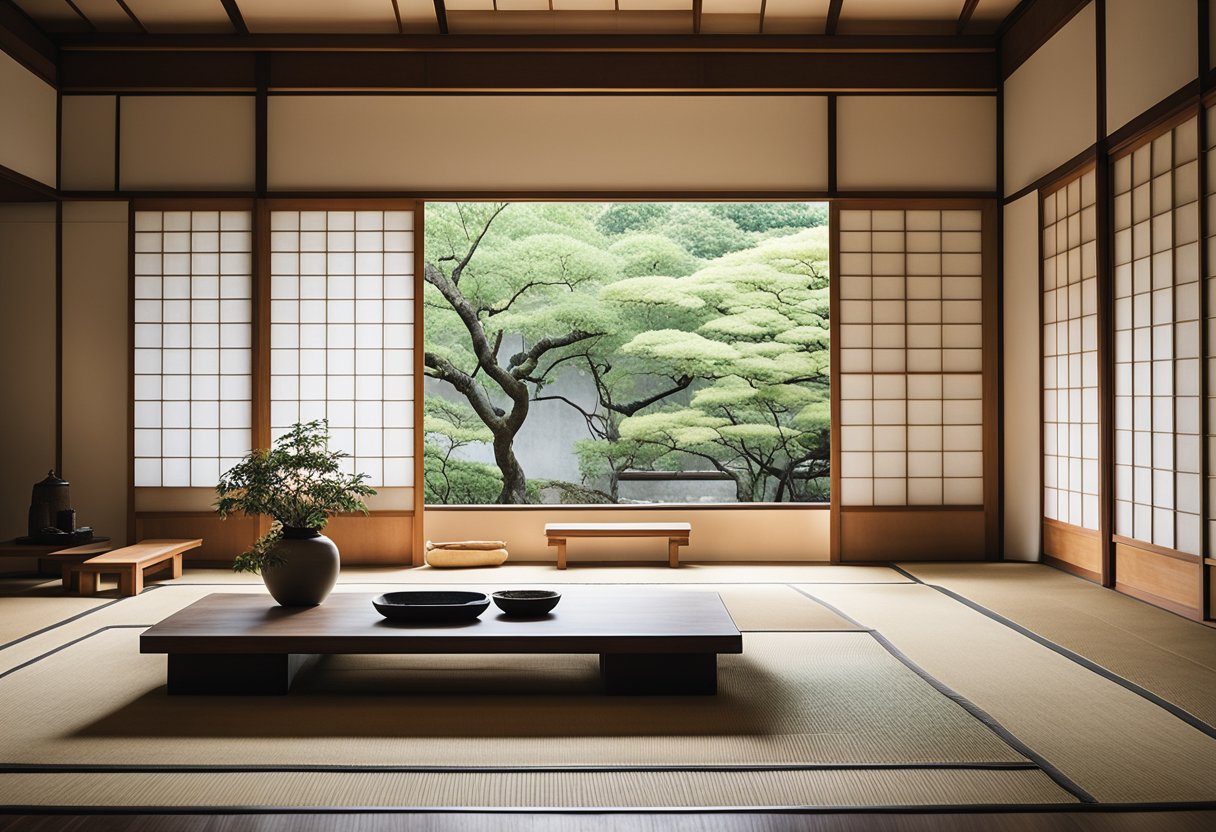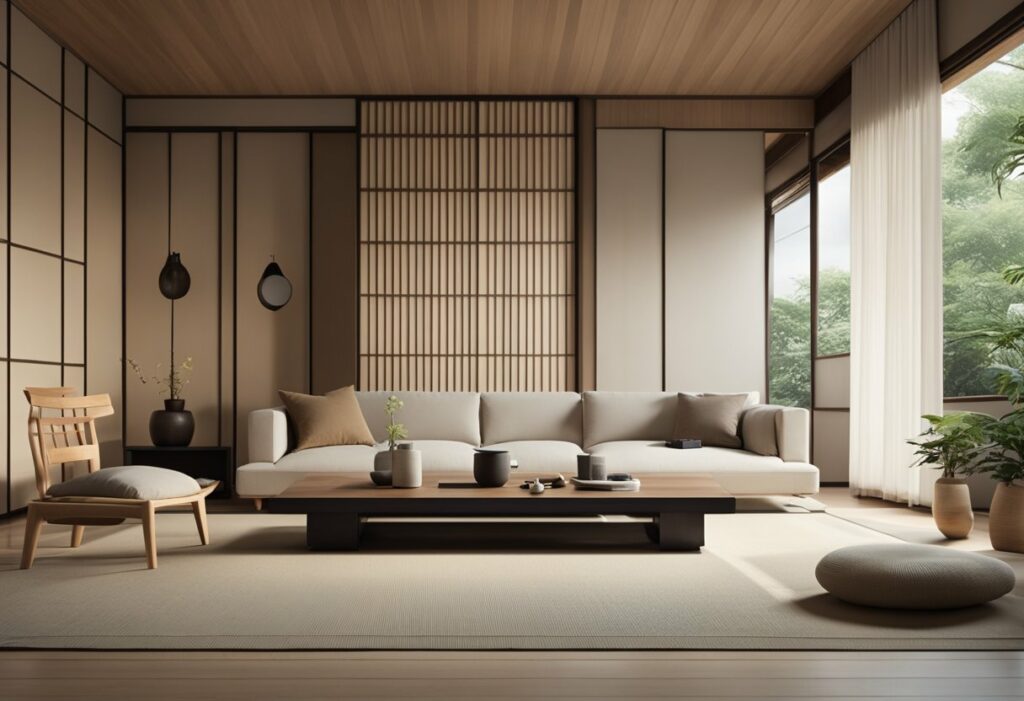Modern Japanese Interior Design: The Perfect Blend of Minimalism and Elegance
Modern Japanese interior design is a style that has been gaining popularity in recent years. This design philosophy is centered around simplicity, minimalism, and functionality. It is a style that is deeply rooted in Japanese culture and tradition, and it has had a lasting impact on Western architecture and interiors.

One of the foundations of modern Japanese interior design is the concept of “Ma,” which refers to the use of negative space to create a sense of harmony and balance. This principle is reflected in the use of clean lines, open spaces, and natural materials such as wood and stone. Another key element of this style is the use of light, both natural and artificial, to create a warm and inviting atmosphere.
If you are interested in incorporating modern Japanese design into your home, there are many ways to do so. From adding traditional Japanese elements such as shoji screens and tatami mats to incorporating modern furniture and lighting, there are many ways to create a space that is both functional and beautiful. With a little creativity and attention to detail, you can create a space that reflects your personal style while also embracing the principles of modern Japanese interior design.
Key Takeaways
- Modern Japanese interior design is a style that emphasizes simplicity, minimalism, and functionality.
- The concept of “Ma” is a key element of this style, which uses negative space to create harmony and balance.
- You can incorporate modern Japanese design into your home by using natural materials, clean lines, and warm lighting.
Foundations of Modern Japanese Interior Design

When it comes to modern Japanese interior design, the influence of natural materials and craftsmanship is paramount. The use of wood, stone, and bamboo is not just about aesthetics, but also a celebration of traditional Japanese craftsmanship and the connection to nature. The technique of Shou Sugi Ban, a method of charring wood to increase its durability and resistance to fire, is a prime example of this craft.
Influence of Natural Materials and Craftsmanship
The principles of Ma and Wabi-Sabi play a significant role in modern Japanese interior design. Ma, the concept of negative space, creates a sense of harmony and balance within living spaces. Wabi-Sabi, embracing imperfection and impermanence, brings a unique sense of elegance and serenity to the design, celebrating the beauty of simplicity and natural materials.
Principles of Ma and Wabi-Sabi
The fusion of Japanese and Scandinavian design, also known as Japandi style, has gained popularity for its minimalist aesthetic, clean lines, and neutral colour palette. This synergy combines the uncluttered spaces of Japanese minimalism with the timeless elegance of Scandinavian design, creating a harmonious and balanced living environment.
Japanese and Scandinavian Synergy
In modern Japanese interior design, the emphasis on functionality is pivotal. Living spaces are designed with a focus on elegance and practicality, incorporating elements such as large windows, wood furniture, and sliding doors to create a seamless connection between indoor and outdoor spaces.
Living Spaces and Functionality
Cultural significance and modern adaptations are at the heart of modern Japanese interior design. The design elements and aesthetics not only reflect the traditional values of Japanese culture but also adapt to contemporary lifestyles, creating spaces that evoke a sense of relaxation and tranquillity.
Cultural Significance and Modern Adaptations
Sustainability and future trends are integral to modern Japanese interior design. With a focus on attention to detail and timeless elegance, the design embraces minimalism, neutral colours, and sustainable practices, paving the way for a more environmentally conscious and aesthetically appealing future.
Sustainability and Future Trends
Incorporating Modern Japanese Design into Homes

If you’re looking to create a tranquil and peaceful home, incorporating elements of modern Japanese design could be the perfect solution. This style of interior design is characterized by its simplicity, minimalism, and focus on natural elements. By blending traditional Japanese elements with modern design, you can create a unique and calming space that is both functional and beautiful.
Elements of Tranquillity and Peace
The key to creating a modern Japanese interior is to focus on elements of tranquillity and peace. This can be achieved through the use of neutral colours, natural materials, and simple forms. Japanese interiors often feature a limited colour palette of whites, greys, and earthy tones, which helps to create a sense of calm and serenity.
Natural World Inside: Plants and Greenery
One of the most important elements of modern Japanese design is the incorporation of the natural world inside the home. This can be achieved through the use of indoor plants and greenery, such as bonsai trees or other types of indoor plants. Not only do these plants add beauty to the space, but they can also help to purify the air and create a sense of tranquillity.
Maximising Space and Light
To create a sense of openness and spaciousness, modern Japanese design often incorporates large windows and room dividers, such as shoji screens. This allows natural light to flood the space, creating a bright and airy atmosphere. Additionally, the use of light wood furniture and ceramics can help to create a sense of warmth and comfort.
Furniture and Decor: Blending Tradition with Modernity
When it comes to furniture and decor, modern Japanese design blends traditional Japanese elements with modern design. This can be seen in the use of tatami mats, cushions, and ikebana flower arrangements. Additionally, the use of wood furniture and natural materials can help to create a sense of warmth and comfort.
Decluttering and Mindful Living
Another important aspect of modern Japanese design is the focus on decluttering and mindful living. This can be achieved through the use of minimalism and Japanese minimalism, which emphasizes simplicity and the removal of unnecessary items. By decluttering your space, you can create a sense of calm and tranquillity that is essential for a modern Japanese interior.
Global Influence and Adaptation
Modern Japanese design has been influenced by many different cultures, including Scandinavian design and Asian influences. This has led to the development of Japandi interior design, which blends Japanese and Scandinavian design elements. By adapting these design elements to your own space, you can create a unique and calming environment that reflects your personal style.
In conclusion, modern Japanese interior design is a beautiful and calming style that can be easily incorporated into your home. By focusing on natural elements, decluttering, and mindful living, you can create a space that is both functional and beautiful. Whether you’re looking to create a space for relaxation or for entertaining guests, modern Japanese design is the perfect solution.
Frequently Asked Questions

How can I infuse a modern Japanese aesthetic into my living room?
To infuse a modern Japanese aesthetic into your living room, you can start by incorporating natural materials such as wood, bamboo, and stone. Keep the furniture minimalistic, with clean lines and neutral colours. Add some greenery and use soft lighting to create a calming ambiance. You can also add some traditional Japanese elements such as shoji screens or tatami mats to add authenticity to the space.
What are the key elements for designing a bedroom with a modern Japanese flair?
To design a bedroom with a modern Japanese flair, you should focus on simplicity, minimalism, and functionality. Use natural materials such as wood and stone, and keep the colour palette neutral. Use low furniture with clean lines and avoid clutter. You can also add some traditional Japanese elements such as a shoji screen or a sliding door to add a touch of authenticity.
Could you share some innovative ideas for modern Japanese interior styling?
Innovative ideas for modern Japanese interior styling include using traditional Japanese elements such as shoji screens, tatami mats, and sliding doors in a modern way. You can also incorporate natural materials such as bamboo, wood, and stone in unique ways. Another idea is to use Japanese-inspired art or pottery to add interest to the space.
What are the characteristics of a modern Japanese-style house interior?
A modern Japanese-style house interior is characterized by simplicity, minimalism, and functionality. The use of natural materials such as wood, bamboo, and stone is common. The colour palette is neutral, with a focus on creating a calming ambiance. Traditional Japanese elements such as shoji screens, tatami mats, and sliding doors are also often incorporated into the design.
How does modern Japanese interior design integrate with exterior spaces?
Modern Japanese interior design integrates with exterior spaces seamlessly, with a focus on creating harmony between the interior and exterior. The use of natural materials such as wood and stone is common, and the colour palette is often neutral to blend in with the natural surroundings. Large windows and sliding doors are often used to bring the outdoors in and create a sense of openness.
What are the principles of minimalist Japanese interior design?
The principles of minimalist Japanese interior design include simplicity, functionality, and natural materials. The focus is on creating a calming and uncluttered space with clean lines and a neutral colour palette. Furniture is kept to a minimum, with an emphasis on functionality. Traditional Japanese elements such as shoji screens and tatami mats are often incorporated into the design.



